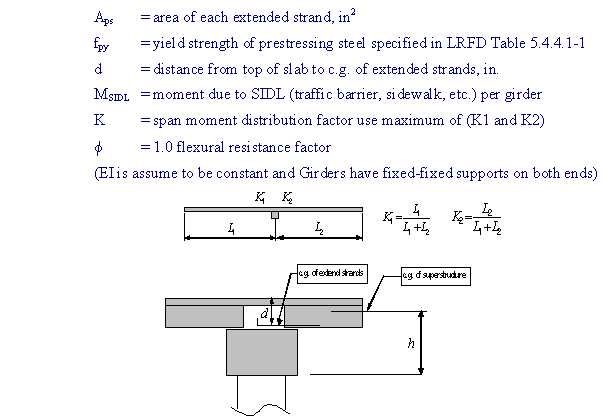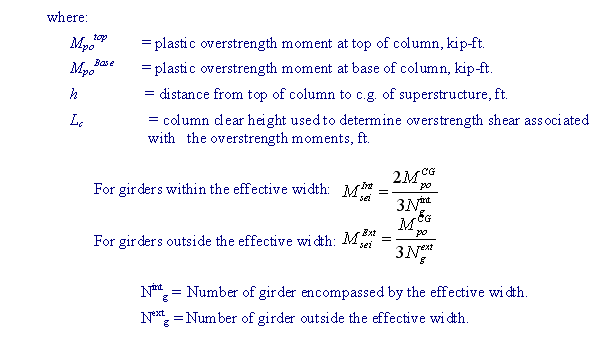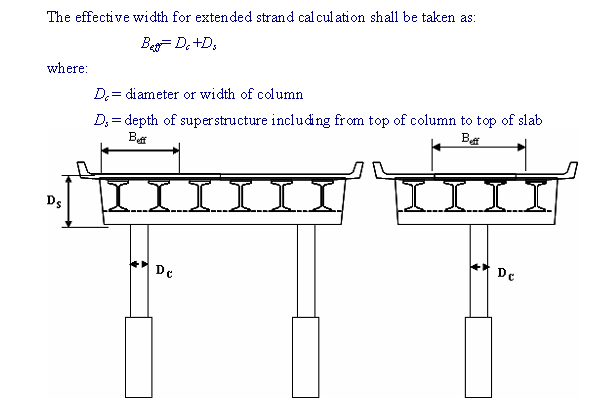
The required number of extended strands at the end of prestressed girder shall be taken as:  where: 
The plastic hinging moment at the c.g. of superstructure is calculated using the following:   
For precast prestressed girders-slab bridges, two-thirds of the plastic hinging moment at the c.g. of the superstructure shall be resisted by girders within the effective width, and the remaining one-third by girders outside the effective width. A design example (Microsoft Excel file 04-2008.xls) is provided for guidance. WSDOT BDM will be updated accordingly.
This Design memorandum provides guidance for design of extended strands at fixed pier connections of continuous prestressed girder superstructures. Strand extension details with strand anchors and strands chucks are used for continuous spans at fixed diaphragms for WSDOT bridges. The effect of time-dependent positive moments from creep and shrinkage should be considered in determination of the positive moment capacity. Designers shall provide a minimum of 4 extended strands regardless of design requirements. The number of extended straight strands needed to develop the required moment capacity at the end of girder is based on the yield strength of the strands. Strands used for this purpose must be developed within the short distance between the two girder ends, 2’-0” minimum. Strand anchors should be installed at 1’-9” from the girder ends. The column plastic hinging moment is resisted by the bent cap through torsion forces. The torsion in the bent cap is distributed into the superstructure based on the relative flexibility of the superstructure and the bent cap. Hence, the superstructure does not resist column overstrength moments uniformly across the width. To account for this, an effective width approximation is used, where the maximum resistance per unit of superstructure width of the actual structure is distributed over an equivalent effective width to provide an equivalent resistance. Based on the structural testing conducted at the University of California at San Diego La Jolla, California in the late 1990's (Holombo 2000), roughly two-thirds of the column plastic moment is to be resisted by the girders is within the effective width. The remaining one-third is resisted by girders outside the effective width.
cc: Mohammad Sheikhizadeh, Bridge Construction - 47354
|